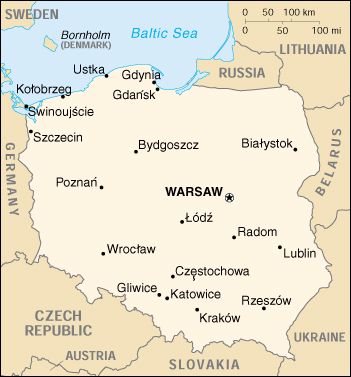Poland gained its independence in 1918 only to
be overrun by Germany and the Soviet Union in World War II. It became a Soviet satellite
country following the war, but one that was comparatively tolerant and progressive. Labor
turmoil in 1980 led to the formation of the independent trade union "Solidarity"
that over time became a political force and by 1990 had swept parliamentary elections and
the presidency. A "shock therapy" program during the early 1990s enabled the
country to transform its economy into one of the most robust in Central Europe, boosting
hopes for acceptance to the EU. Poland joined the NATO alliance in 1999.
| Location: |
Central Europe, east of Germany
52 00 N, 20 00 E |
| Population: |
38,633,912 (July 2001 est.) |
| Area: |
total: 312,685 sq km
land: 304,465 sq km
water: 8,220 sq km
slightly smaller than New Mexico |
| Climate: |
temperate with cold, cloudy, moderately
severe winters with frequent precipitation; mild summers with frequent showers and
thundershowers |
| Terrain: |
mostly flat plain; mountains along southern
border |
| Elevation: |
lowest point: Raczki Elblaskie
-2 m
highest point: Rysy 2,499 m |
|

